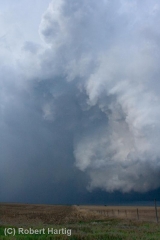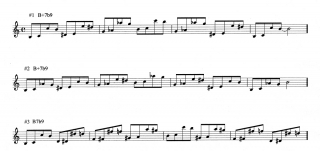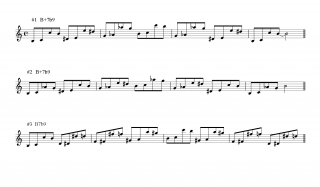Last Wednesday, May 11, in northwest Kansas was a bust chase as far as tornadoes were concerned. But the prairie sky offers compensations that are blue-ribbon prizes in their own right if you’ve got an eye for beauty.
Here are some shots of a couple of low-topped supercells taken in the Atwood/Oberlin area. These storms dumped some marble-sized hail and exhibited visible, though not strong, rotation. They were lovely to behold, sculptures of moisture shaped by the wind and lit by the light of the waning evening. Atmospheric dramas such as these are the true panorama of the Great Plains. Like a run-on sentence, the treeless landscape stretches off into limitless sameness, leaving the sky to provide punctuation, energy, and color.








